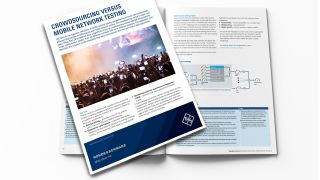Meet coverage, quality and service performance objectives
The rollout of 5G NR and other new technologies, including NB-IoT and LTE-M, has initiated a surge in network optimization and troubleshooting. To ensure end-user quality of experience (QoE) and network performance, use case-targeted testing solutions need to offer reliable data collection and extensive drill-down functions in data analytics.
Data and intelligence enable operators to assess and identify network QoE and performance-critical factors effectively and systematically. Intelligent insights, generated from reliable and accurate data, help operators take well-informed and fact-based decisions for strategic investments.
Initial optimization
Network optimization consists of two main parts: initial and continuous optimization. Initial optimization occurs during network implementation to prepare the network for the launch. The aim is to ensure that the agreed objectives for coverage, quality and service performance are met. These objectives are often defined as target values for sets of key performance indicators (KPI) that measure network performance and the quality of end-to-end services.
Continuous optimization
Continuous optimization is an integral part of network operations, particularly in today’s technology-driven times where networks are constantly changing:
- The network capacity has to continuously increase due to an ever-growing traffic demand
- New network elements are regularly put into operation
- New services are introduced, and coverage is extended
Continuous optimization can be seen as a cyclic two-step process involving data collection and data analytics.
Step 1 data collection: The performance of both the network and the end-to-end services is assessed, and the necessary data is collected. The input data sets are collected from various sources ranging from statistical counters generated in the network elements to measurement data obtained during drive and walk tests.
Step 2 data analytics: This process needs to provide automatic data processing and accurate analysis, resulting in intelligent insights into the network. Finally, corrections and network changes are proposed, decided and implemented.
The Smart platform
The modular Smart platform offers particular testing components for network optimization and troubleshooting. These components can be easily configured for specific use cases and effectively tailored to meet customer needs. For more information, please refer to the product pages below or contact our sales experts via the contact form.
















